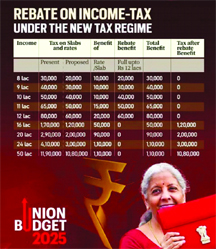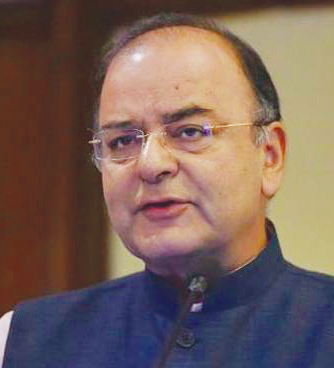
India will focus on enhancing the spending power of its middle class, promoting inclusive development, and boosting private investment to stimulate economic growth, Finance Minister Nirmala Sitharaman said on Saturday while unveiling the annual budget for 2025-26. The budget will include measures aimed at supporting the poor, youth, farmers, and women, along with plans for transformative reforms in taxation.
Despite being the world’s fifth-largest economy, India is expected to experience its slowest growth in four years, primarily due to weak urban demand and sluggish private investment. The Chief Economic Adviser’s report, released on Friday, indicated that India’s economy is projected to remain subdued in the fiscal year starting April 1. It also emphasised the need for long-delayed reforms in land and labour sectors to enhance medium-term growth prospects.
Although growth for the near term is aligned with the 10-year average, economists suggest India requires an 8% growth rate to achieve its long-term economic objectives and create sufficient jobs for its young population. Experts have proposed tax cuts on income and energy products to ease the burden on individuals, alongside building on the $24 billion job creation schemes introduced in the first post-election budget in July.
The budget will also introduce measures in sectors such as urban development, power, and mining. However, equity markets remained flat as traders awaited more details on the announcements. As of 11:17 a.m. IST, both the Nifty 50 and BSE Sensex were up by approximately 0.3%.
India has faced high food inflation over the past year, with retail inflation easing to a four-month low of 5.2% in December. However, food inflation, which accounts for nearly half of the consumption basket, remained elevated at 8.39%.
To boost productivity in the agricultural sector, the government will launch a national mission aimed at increasing the production of high-yielding crops, particularly pulses and cotton. Additionally, the limit for subsidised credit to farmers has been increased to Rs 500,000 ($5,778), up from the previous Rs 300,000.
Items that have got cheaper
– Life-saving drugs: Cancer, chronic disease medicines– 36 life-saving drugs are fully exempted from basic custom duties
– Electronic goods: Customs duty on open cell for interactive flat panel display, touch glass sheet, touch sensor for LED/LCD TVs reduced from 15 to five per cent
– EV and phone batteries: The list of exempted capital goods will include 35 new goods for electronic vehicle (EV) battery production and 28 new goods for mobile phone battery production.
– Fish and seafood: Customs duty on frozen fish paste (surimi) is reduced from 30 to five per cent. Customs duty on fish hydrolysate for the manufacture of aquatic feed is reduced from 15 to five per cent.
– Synthetic flavouring essences: Customs duty on mixtures of odoriferous substances used in food or drink industries reduced from 100 to 20 per cent
– Waste and scrap of Lithium: Customs duty reduced on ion battery, lead, zinc, antimony, beryllium, bismuth, cobalt, cadmium, molybdenum, rhenium, tantalum, tin, tungsten, zirconium, and copper scrap reduced to nil
– Cobalt powder: Customs duty reduced from five per cent to nil
– Wet blue leather: Customs duty reduced from 10 per cent to nil
– Shuttle less looms: Customs duty on rapier looms and air jet looms for use in the textile industry reduced from 7.5 per cent to nil
– Mobile equipment: Customs duty on inputs/sub-parts of camera module, connectors, manufacture of wired headset, microphone and receiver, USB cable, fingerprint reader/ sensor of cellular mobile phone reduced from 2.5 per cent to nil
– Space satellite equipment: Customs duty on goods used in the building of launch vehicles and launching of satellites, ground installation for satellites including its spares and consumables reduced to nil
– Shipbuilding: Exemption on customs duty for ships and their parts extended for 10 more years.
– Motorcycle imports: Customs duty on engine capacity not exceeding 1600 CC reduced to 40 per cent, semi-knocked down reduced to 20 per cent, and completely knocked down reduced to 10 per cent. Engine capacity 1600 CC and above reduced to 30 per cent.
Items that have got costlier
– Knitted fabrics: Customs duty hiked from 10 to 20 per cent
– Interactive flat display: Customs duty hiked from 10 to 20 per cent
– Social Welfare Surcharge: Exemption removed on 82 tariff lines currently under cess.
Interestingly, Finance Minister Nirmala Sitharaman made history by presenting her eighth consecutive Budget today, surpassing the record of former Prime Minister and Finance Minister Morarji Desai. Sitharaman, who holds the record for the longest Budget speech delivered on February 1, 2020, which lasted two hours and 40 minutes before being cut short.





Be the first to comment